LinkedIn for B2B Marketing: Why It Still Works and How to Amplify Your Strategy with Employee Engagement
by Jennifer Marsnik
LinkedIn remains a valuable social media platform in a marketer’s toolbox. And despite the buzz around newer platforms or shifting algorithms, its role in marketing has only grown more central.
The reason is simple: LinkedIn is where decision-makers are. It’s where they read industry news, follow thought leaders, and may evaluate potential providers. With more than one billion users and nearly 80 percent of them influencing business decisions, the platform offers unmatched access to the professionals that marketing efforts are trying to reach.
But if your organization is relying solely on posts from your company page or the occasional ad, you are only scratching the surface of what’s possible. The real power lies in activating the people behind the brand: your employees.
The Power of Employee Engagement
Employee voices can carry more credibility than brand voices. When a company page shares an update, it may get a few hundred impressions. But when your partners, associates, or other staff share a post, even if it’s the same content, it’s seen as authentic, personal, and worthy of engagement. That post can reach thousands of relevant connections and start meaningful conversations. For a professional services firm where relationships and reputation drive business, that’s invaluable.
Make It Easy, Make It Worthwhile
To build momentum, start by making it easy for employees to participate. Package content in a way that’s ready to go—sample headlines, suggested captions, and clear calls to action go a long way. Encourage personalization so their posts feel genuine, not scripted. Tools like GaggleAMP or EveryoneSocial can streamline this, but even a shared Google Doc can do the trick.
Recognition also matters. Share engagement stats, highlight posts that performed well, and create a friendly competition or internal shoutout system. Employees are more likely to share when they both understand the impact and feel supported in doing so.
Leadership Sets the Tone
One of the biggest drivers of engagement is seeing firm leadership involved. When managing partners, a chairperson, or committee leads actively share insights or comment on industry issues, it signals that participating on LinkedIn is not only acceptable, it’s encouraged. That leadership-by-example approach helps break through hesitation and establishes a culture of digital visibility.
Align Engagement with Employee Goals
Finally, don’t just position LinkedIn sharing as an ask. Help employees see how it benefits them, too. Building a professional brand, showcasing expertise, and expanding their network can lead to speaking opportunities, new business, or career growth. When the value is mutual, engagement is far more sustainable.
8 Ideas for Activating Employees as LinkedIn Advocates
- Create a Clear Advocacy Program
-
- Define goals (brand awareness, lead generation, thought leadership).
- Identify content types employees should share (law firm news, industry insights, personal stories).
- Offer guidance on how often to post and how to engage meaningfully.
- Provide Shareable, Pre-Packaged Content
-
- Develop a regular cadence of shareable posts (with optional personalization).
- Use employee advocacy tools like EveryoneSocial, GaggleAMP, or Hootsuite Amplify to distribute content easily.
- Tailor posts by role or department to keep messaging authentic and relevant.
- Make It Easy and Rewarding
-
- Offer templates or headlines they can adapt.
- Recognize top advocates publicly or through small incentives.
- Share analytics to show the impact of their engagement (e.g., reach, clicks, new followers).
- Train and Empower
-
- Host LinkedIn workshops to improve profile strength and posting confidence.
- Encourage employees to build their personal brands by sharing their knowledge, expertise and insights on industry topics.
- Feature standout posts as examples of good content.
- Lead by Example
-
- Have firm leaders and marketing execs actively post, comment, and share.
- When leadership is involved, it signals credibility and encourages team-wide participation.
- Encourage Engagement, Not Just Sharing
-
- Ask employees to like, comment on, or add insights to firm posts and not just reshare them.
- Promote tagging teammates, partners, or clients to increase visibility and interactions.
- Spotlight Employees on the Company’s Page
-
- Rotate features that highlight team members’ stories, wins, or insights.
- This not only builds engagement but makes employees more likely to reshare and promote.
- Align Content with Personal Value
-
- Show how sharing supports their own reputation as industry experts.
- Encourage posts about professional learnings, behind-the-scenes stories, or case outcomes (with client approval).
The Bottom Line
Trust and visibility are non-negotiable. LinkedIn remains the best place to build both. By empowering employees to be part of the conversation, you multiply the reach and credibility of every message. The tools are there, and so is the audience. The only question is whether your people are showing up.
About the Author:
With Edge Marketing since 2007, Jennifer Marsnik specializes in helping clients develop and implement strategic plans that support their overall business goals.


Leave a Reply
Want to join the discussion?Feel free to contribute!